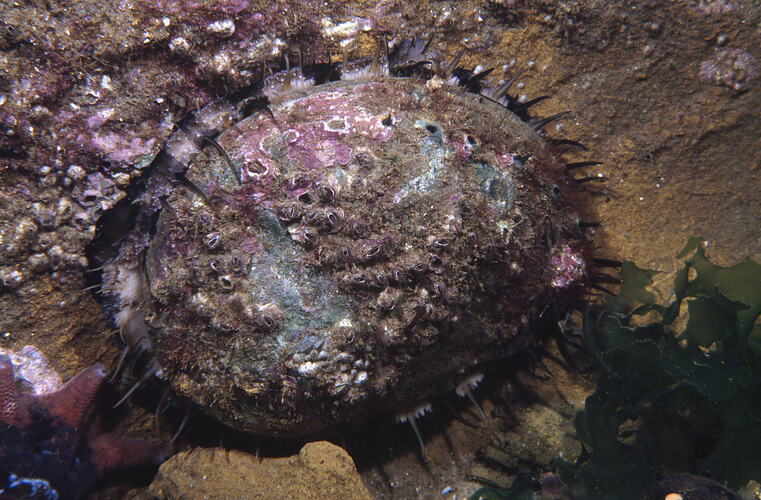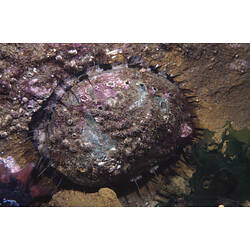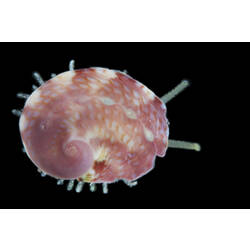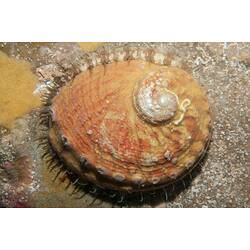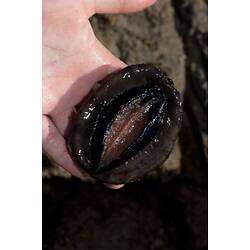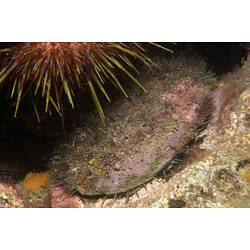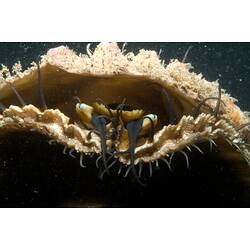General Description
Shell a flattened, sculptured oval, usually red-brown with a black edge. Row of perforations around the edge of the shell; conical, protruding outwards from the surface (tubercules), 6 -7. Edge of foot black and fringed. Shell up to 13 cm long.
Biology
Abalone use the holes in their shells to move water into their shells and over their gills, allowing them to breathe. They cling to the surface of rocks using their very large foot muscle. Abalone feed on algae in the water and on rocks and also graze on seagrass. Black-lipped Abalone are thought to live for up to 20 years. In Black-lipped Abalone, sexual maturity depends on age rather than size. Individuals mature at 3 to 6 years when they begin to reproduce by broadcast spawning between spring and autumn. Sizes and growth rates vary depending on the conditions in which an individual lives, but the largest can weigh up to 3 kg. Abalone species are fished for food all over the world. In Australia there are strict controls on how much, what size, and when abalone can be recreationally fished. These restrictions vary between states.
Distribution
South-eastern mainland Australia and Tasmania.
Habitat
Crevices and under boulders on rocky reefs, up to 40 m depth, usually less than 10 m.
More Information
-
Animal Type
-
Animal SubType
-
Brief Id
Sculptured oval shell, conical shell perforations, black edge to foot.
-
Colours
Green, Brown, Black, Grey
-
Habitats
-
Diet
Herbivore
-
Diet Categories
Algae
-
Endemicity
-
Commercial
Yes
-
Conservation Statuses
CITES: Not listed, FFG Threatened List: Not listed, DSE Advisory List: Not listed, IUCN Red List: Vulnerable
-
Depths
Shore (0-1 m), Shallow (1-30 m)
-
Water Column Locations
On or near seafloor
-
Taxon Name
-
Scientific Author
Leach, 1814
-
Common Name
Black-lipped Abalone
-
Phylum
-
Subphylum
-
Superclass
-
Class
-
Subclass
-
Order
-
Superfamily
-
Family
-
Genus
-
Species Name
rubra
